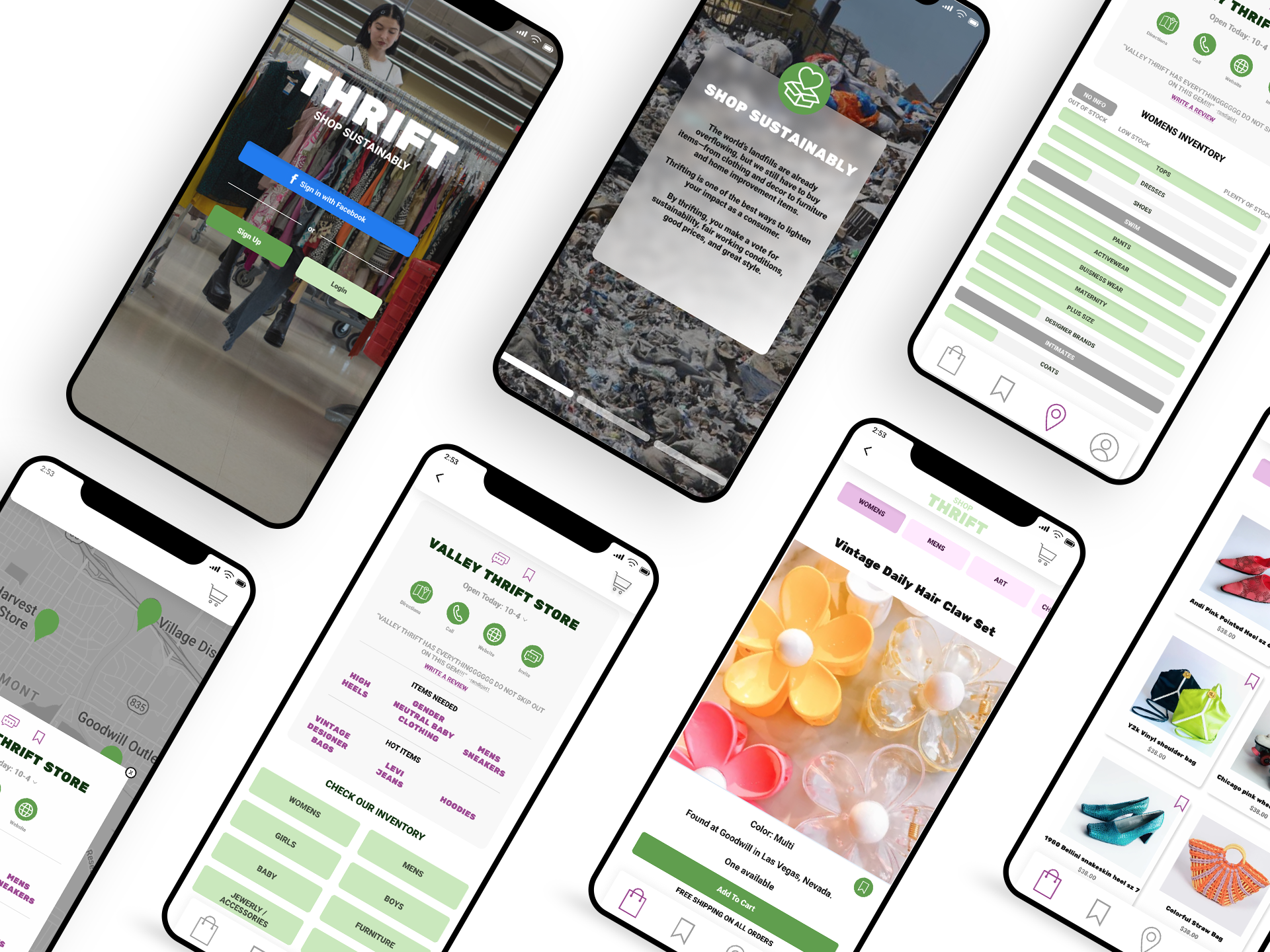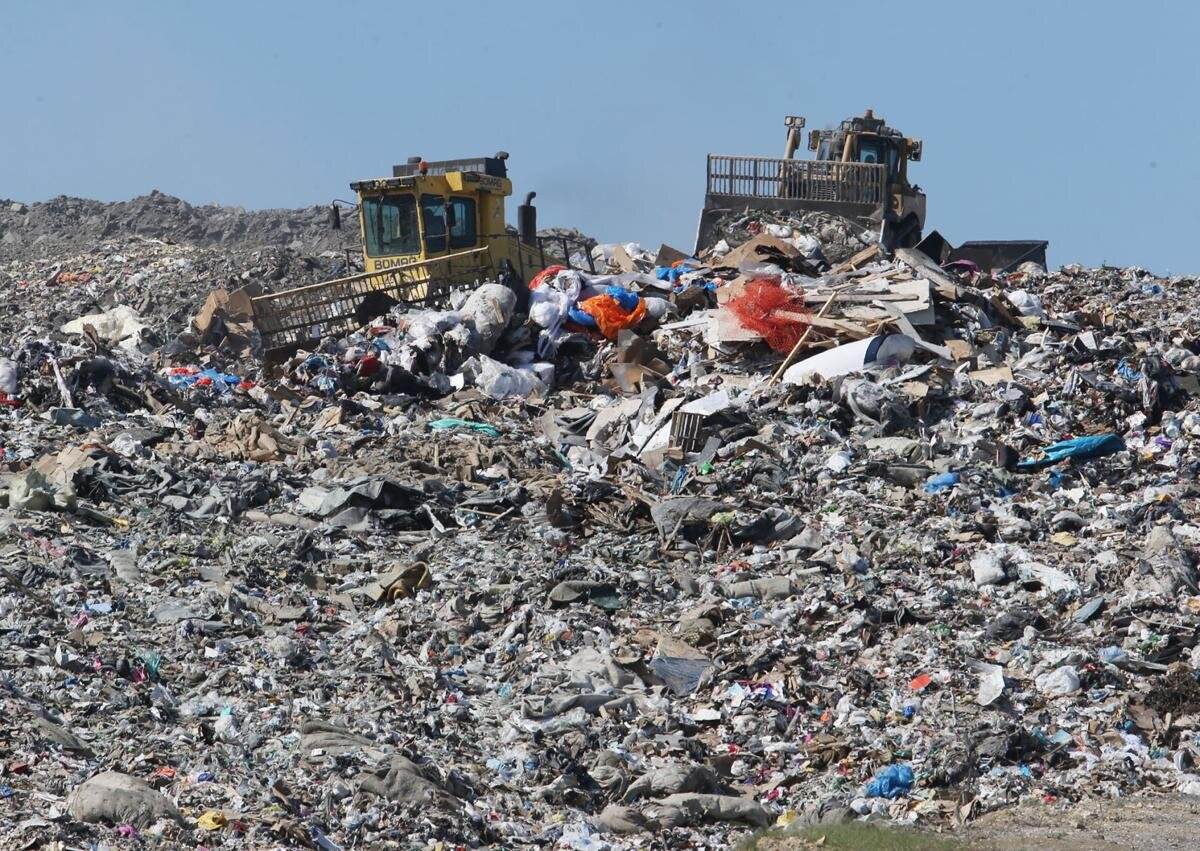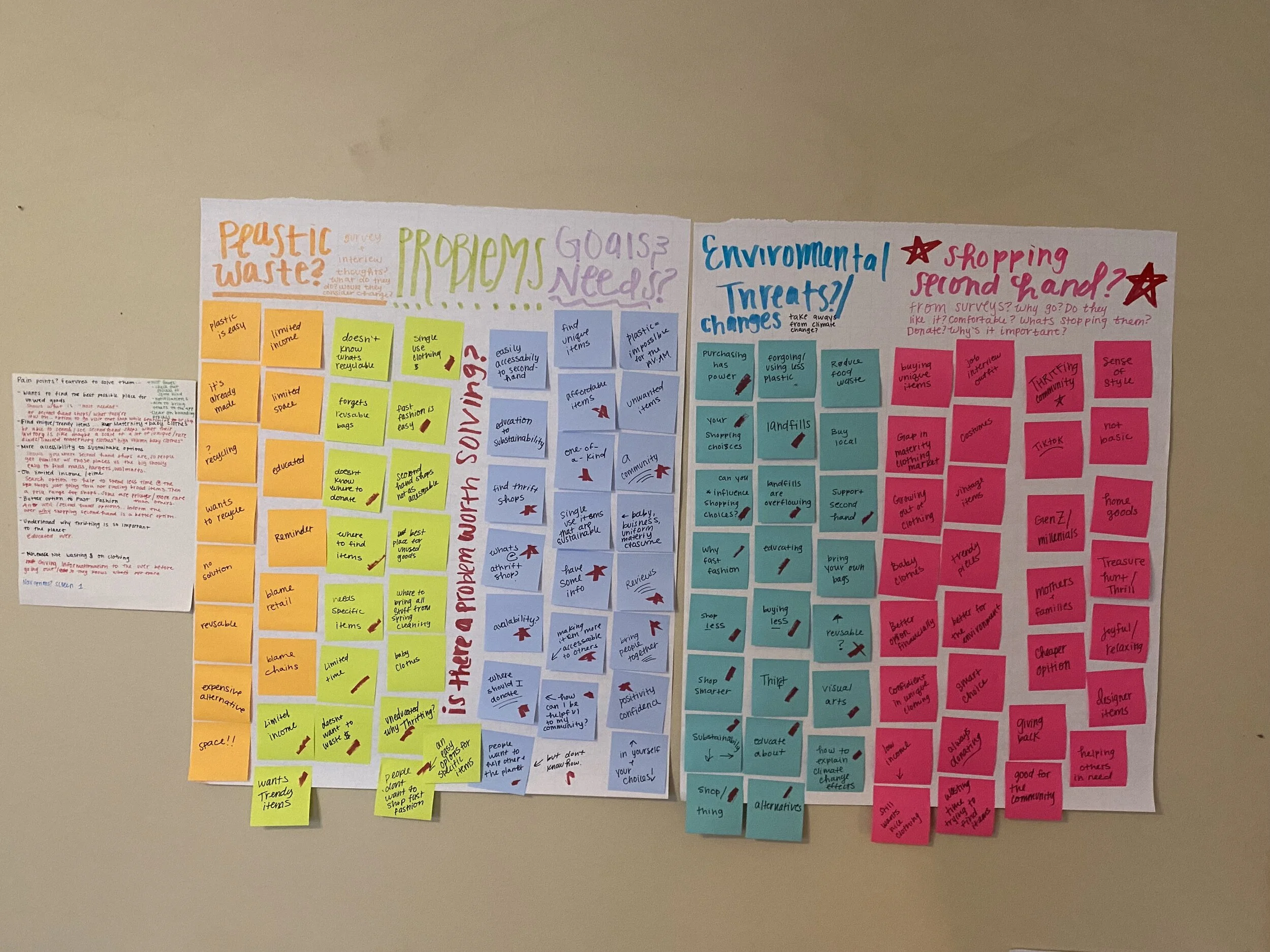THRIFT Application
OVERVIEW
I was tasked with creating an application that aims to solve an issue facing our planet.

Application must haves
Checkout process of some sort
Aim to bring new users to the application
Clear on-boarding process
Approach
When approaching this project, I followed the 5 stages of the Design-Thinking Process. The design thinking process is not as linear as it may seem; the steps overlap and repeat themselves to be extremely useful in finding the users' needs and testing throughout the process.
In conjunction with the Design-Thinking Process, I implemented a UX Design Process which you will follow below in Process.
PROCESS
EMPATHIZE
RESEARCH OUTCOMES
Survey
To begin my research I sent out a simple survey via Google forms to find out what the average American does in their daily routine in consideration to issues facing our planet. I wanted get a broad overview of what they care about and what they are willing to change in their lives to help the planet. I discovered a majority of my survey takers go thrift shopping and wish to buy less from unsustainable, fast-fashion shops.
One-on-one interviews
After getting a broad overview of the average American’s views on issues facing our planet, I dove deeper by conducting six, one-on-one interviews. The goal of these interviews was to gather pivotal insights of the users in-order-to get clarity on what direction to take this project.
This was a crucial part of my research to understand if and/or how the average American factors sustainability into their shopping decisions. This helped me to begin affinity mapping where I picked out shoppers pain points and needs when shopping more sustainably.
Secondary Research
The volume of clothing that Americans throw away each year has doubled in the last 20 years, from 7 million to 14 million tons.
In 2018, 17 million tons of textile waste ended up in landfills, according to data from the Environmental Protection Agency, making up 5.8 percent of the total MSW (municipal solid waste) generation that year.
According to the World Resources Institute, it takes 2,700 liters of water to make one cotton shirt.
Textiles can take up to 200+ years to decompose in landfills

“Every year, the average American generates around 80 pounds of textile waste.”
DEFINE
2. STRATEGY
Affinity Mapping
Affinity mapping is extremely helpful in my process. In affinity mapping I make an in-depth assessment of my research and decipher my research into themes, which helps me draw out insights and determine the priorities of the product. Affinity mapping was the most important step in this project specifically because it helped me draw out prominent pain points and needs of my users. Without this step I wouldn’t have been able to come up with a clear “Problem Statement.”
The Problem
“Our average American has the problem that when trying to shop sustainably, they don’t know where to go or if they are going to find what they need, so they end up picking a fast fashion option. Our solution should deliver a simple to use option to find sustainable clothing the user wants and needs.”

* My AHA! moment
Affinity mapping was my moment of clarity in this project. There are so many issues facing our planet, I was worried I wasn’t choosing the most impactful issue to base my product on. While affinity mapping the lack of confidence in my decision vanished. I felt certain to base my product on shopping sustainably and textile waste. Affinity mapping helped me see all that I gathered in my research and how important of a topic shopping sustainably and textile waste is to my users. This was a very important moment in my process going forward.
User Needs
Based on information from insights during research, personas and a user flow were created to reveal user needs and pain points to guide me in creating a design.
Personas
I created two personas in order to understand and empathize with my users. With personas I did an in-depth analysis of who my key audience is, and it was here that I was able to uncover their biggest needs and pain points when shopping. This step was extremely helpful in understanding my users and where I became very passionate in my users pain points.
User Flow
Next I created a user flow to display the product’s path. I knew this would be a complicated product in order to suffice the users needs, so having a user flow was beneficial to my process. Creating a user flow at the beginning of the process helped me begin creating with a better sense of direction even if that means the flow will be altered throughout the process.
Solution
Thrifting is one of the best ways for our users to lighten their impact as a consumer.
Donating: When our users donate their clothes, they’re are saving the environment from a lot of harm. Clothing that sits in landfills releases toxic greenhouse gases like carbon dioxide and methane into the environment when they break down. Doing a good deed like donating old clothing will make our users feel good because they’re doing something for a worthy cause, but also getting rid of the clutter in their homes and helping others at the same time.
Pain Points
Struggles to find better options to Fast Fashion
Don’t understand why thrifting is important to our planet
Limited accessibility to sustainable options
Struggle to find the best possible place for unused goods
Waste money on trendy fast fashion/clothing they’re out growing
Wants/Needs
Easily find new second-hand store
Find second-hand shops to give unwanted clothes to
Find clothes that don’t break the bank
Find second-hand shops that have need of items our users are longer using to help others
Ability to find one of a kind items
Ability to find sustainable clothing
IDEATE
Sketching
Next, I began sketching with my users needs in mind. My goal was to create a solution that would answer the average American’s biggest pain points when trying to shop and donate sustainably. A product that helps users find second-hand shops near them, with details about the shop, would help the user make a meaningful and sustainable trip every time they go out shopping.
DESIGN
3. WIREFRAMING
After sketching I began creating medium-fidelity wireframes of the product based on my user flow diagram to better guide my users for usability testing.
PROTOTYPE / TEST
4. USABILITY TESTING
Once my medium-fidelity wireframes were complete I began user testing. I decided to do user testing with the medium-fidelity wireframes so I could get an early reading of what was working with users. After testing, I noted the user’s frustrations and expectations going into the product then made the proper adjustments going forward.
The UI of the product did not connect with the user. The users want to see styling connected to the sustainability of the product. But, the concept of the product made my user very excited as a lot of them do thrift shop or have used to thrift shops and have felt shame behind it. They believe this application would give them the confidence to shop there, especially knowing how it positively affects the environment.
“Growing up my mom took me to the Thrift Shop when back to school shopping, I felt ashamed that we couldn’t afford the shops in the mall. Now I am a mother, and I want my children to feel empowered shopping second-hand when back to school shopping.”
-Quote from user test
6. FINAL PRODUCT
Four priority product features
See “ITEMS NEEDED,” which shows what is needed at a specific thrift shop. Have your donation matter even more than it already does, helping both your community and the environment.
See “HOT ITEMS,” where highly popular items are at thrift shops. Plan your day of thrift shopping around those hot spots.
View broad inventory stock of a store before visiting. This give you an opportunity to see if what you’re looking for is at the shop before visiting and before picking a fast fashion option. Plan your day of Thrifting around shops that have items you’re looking for.
Shop unique thrifted items from all over the country without having to move from the couch. An easy alternative to fast fashion applications.
Mobile Product
Tablet Product

“This product could really build a community. Giving confidence to anyone who shops at thrift stores and wants to give back to their community, all while helping the environment”
*Look Back
This is my favorite project. Users were so excited about this product and saw a need for it, which made this project so meaningful to me. But, if I had more time on this project there are a few things I would do differently. I wish I would have had the idea of textile waste much earlier in my process so I could have done more in-depth primary research on the topic. I also would have dug deeper into the topic of fast fashion, thrifting and donating more with one-on-one interviews to gather more insights, because I didn’t have one topic narrowed down yet so I had a lot of information going into the “Process” step.
A major takeaway from this project was to ask “why, why, why, why” in your interviews with users, really dig into every question asked. I learned how valuable user interviews are and how they guided the direction of the project.














